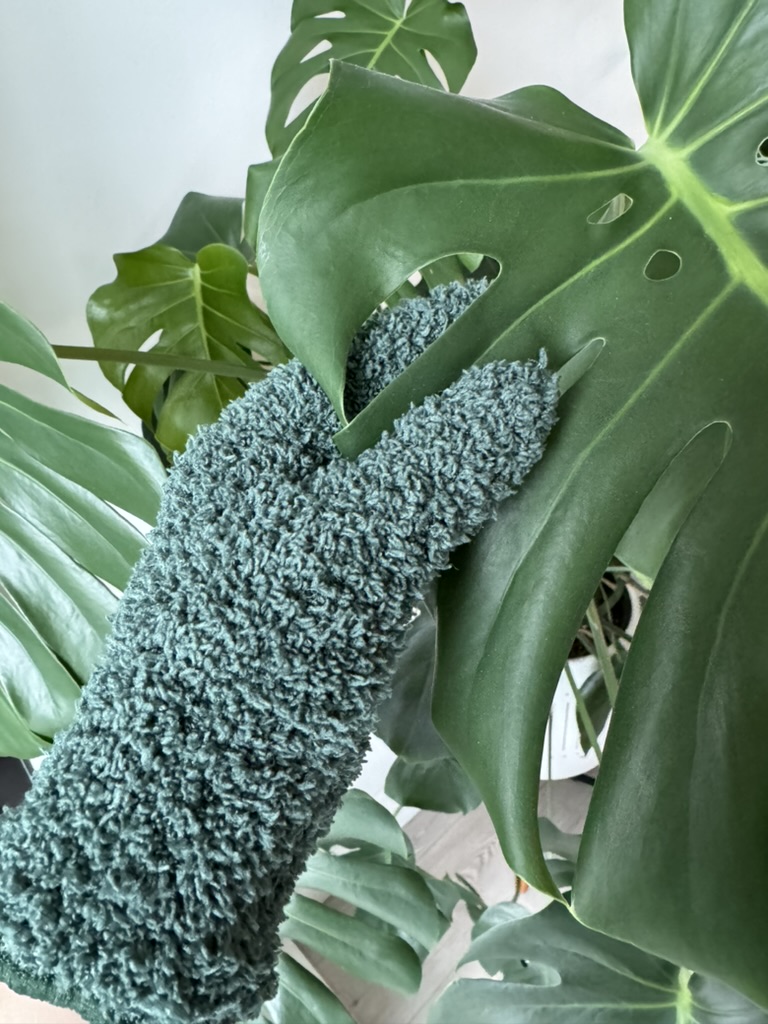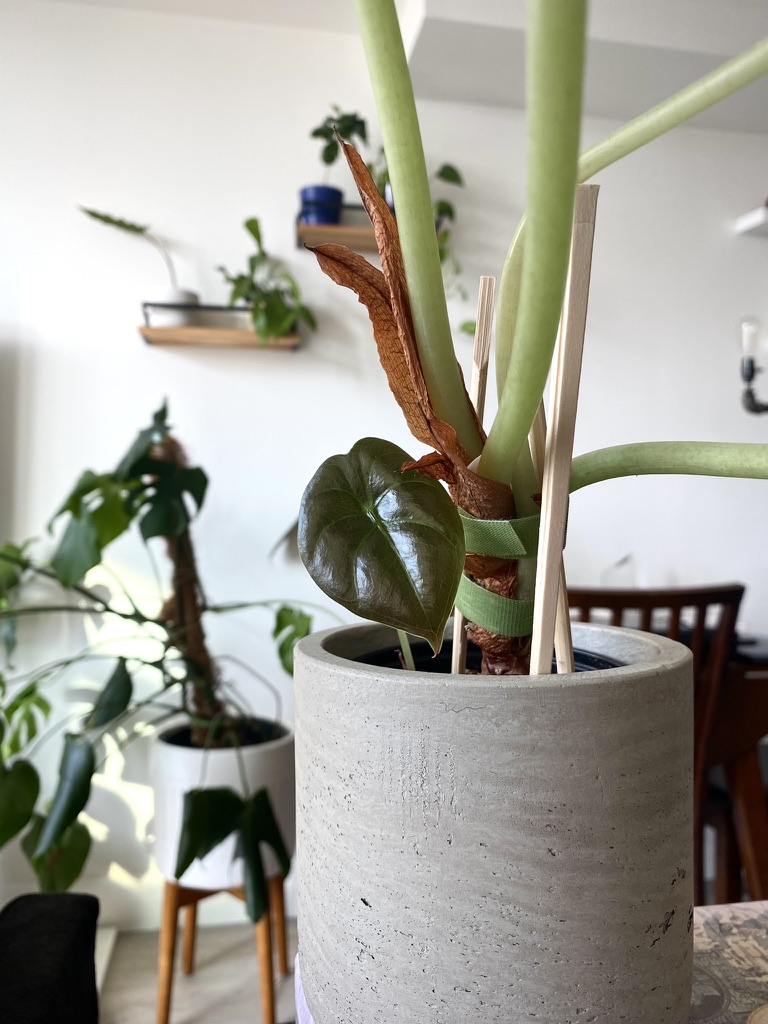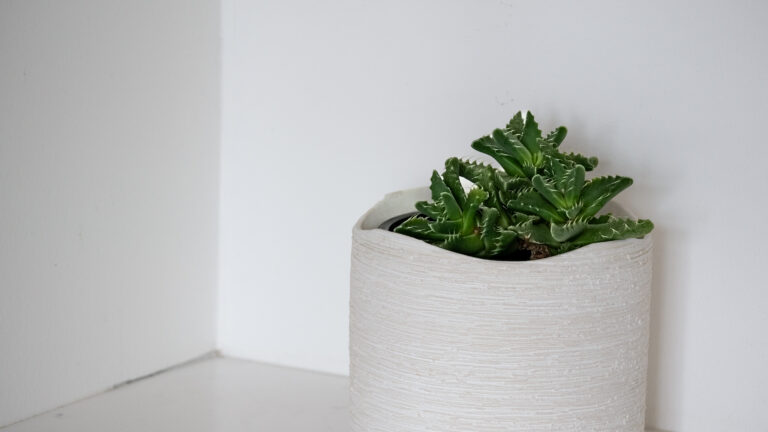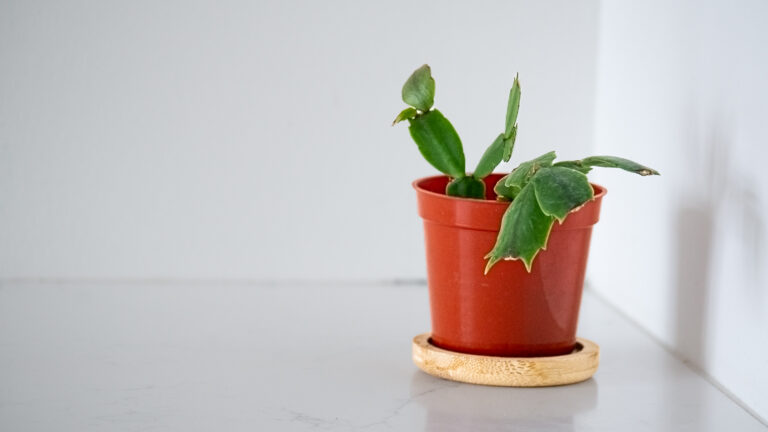Monstera deliciosa or Swiss Cheese Plant is a member of the Monstera genus within the arum family. It is native to Central America.
Monstera deliciosa is referred to as the Swiss Cheese Plant because the holes in the foliage resemble the holes in Swiss Cheese.
There are around 50 species in the monstera genus.
Monstera Deliciosa at a glance.
🪴 Appearance of Monstera Deliciosa
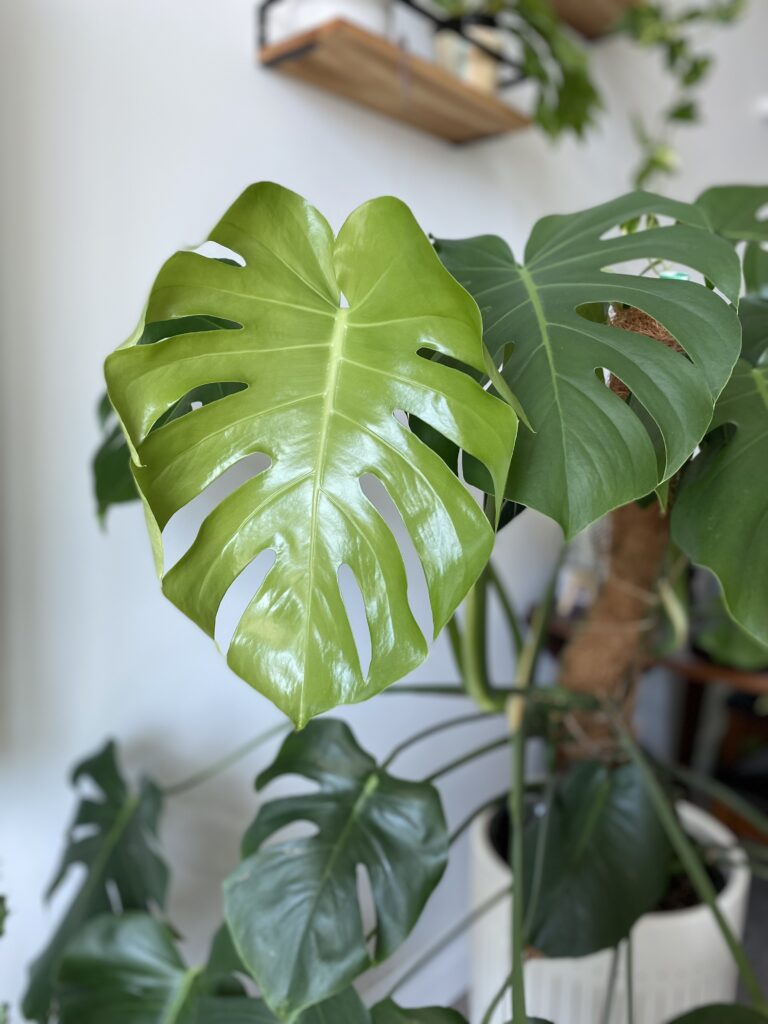
Monstera Deliciosa is a green, vining plant with split leaves. As long as the plant receives ample light, as it matures the new foliage will have fenestrations (holes).
New leaves grow upwards out of the stem of the plant. The leaf itself is wrapped and as time passes the leaf unravels, and the stem continues to grow upwards.
To balance itself, the plant will also grow aerial roots. This helps it ground itself as it races to find the light.
Monstera Deliciosa is a quick growing plant. People either let this plant grow wide and wild, or add a stake (moss pole or coir pole) to try and train the plant grow upwards. As I live in a condo, I use coco coir poles.
☀️ What Light Does Monstera Deliciosa Need?
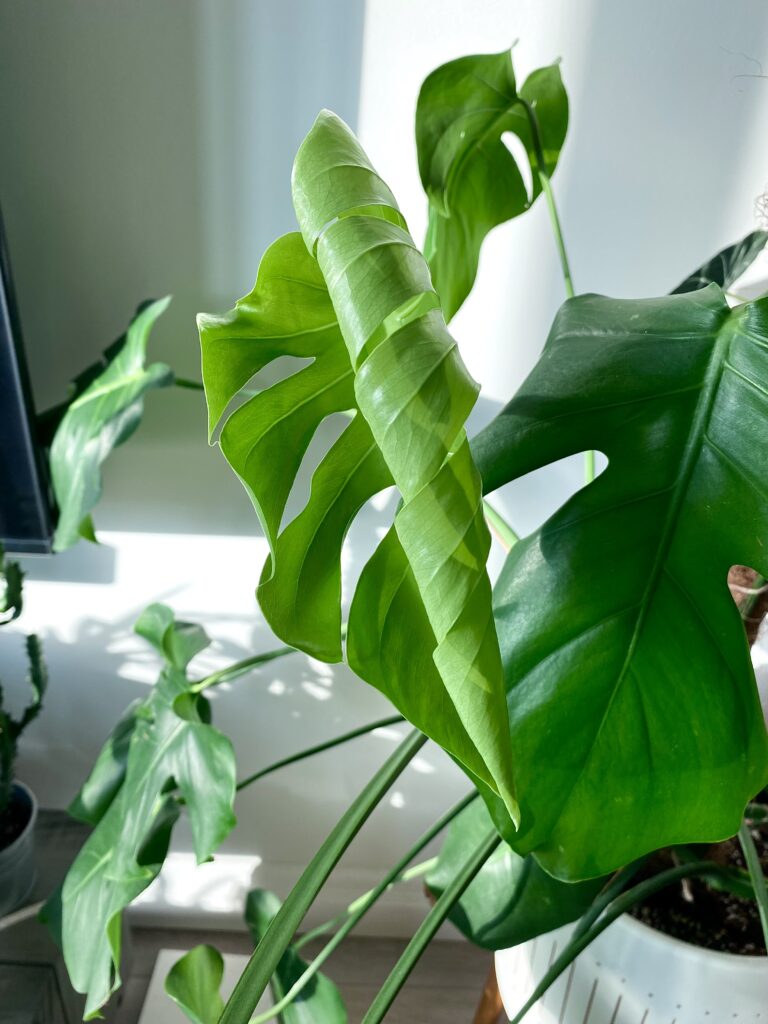
Monstera Deliciosa thrives in bright to medium-bright, indirect light.
I keep my one monstera in the middle of the room with a large south-west facing window. The other monstera has east light so I have that one closer to the window.
🌡️ What Temperature and Humidity do Monstera Deliciosa Like?🌫️
Monstera Deliciosa prefers a temperature between 18 to 30 degrees celsius, but can tolerate 15 celsius during the winter. They also prefer average-higher (60%) humidity. Since they come from rainforest regions, they prefer moist air, but do well in average household humidity levels (40-60%).
I keep my monstera in the middle of the room. With ample light from the large window, and closer to my humidifier (I use the Levoit Hybrid Ultrasonic Humidifier (LV600HH)).
I use my humidifier to ensure the humidity levels in my apartment stays between 40% and 60%. Since I live in Canada and the winters can be very dry, and the humidity can drop below 30% humidity, so its helpful to set the humidity at about 45% or 50% in this season to keep all of my plants thriving.
🌱 How Does the Monstera Deliciosa Grow?
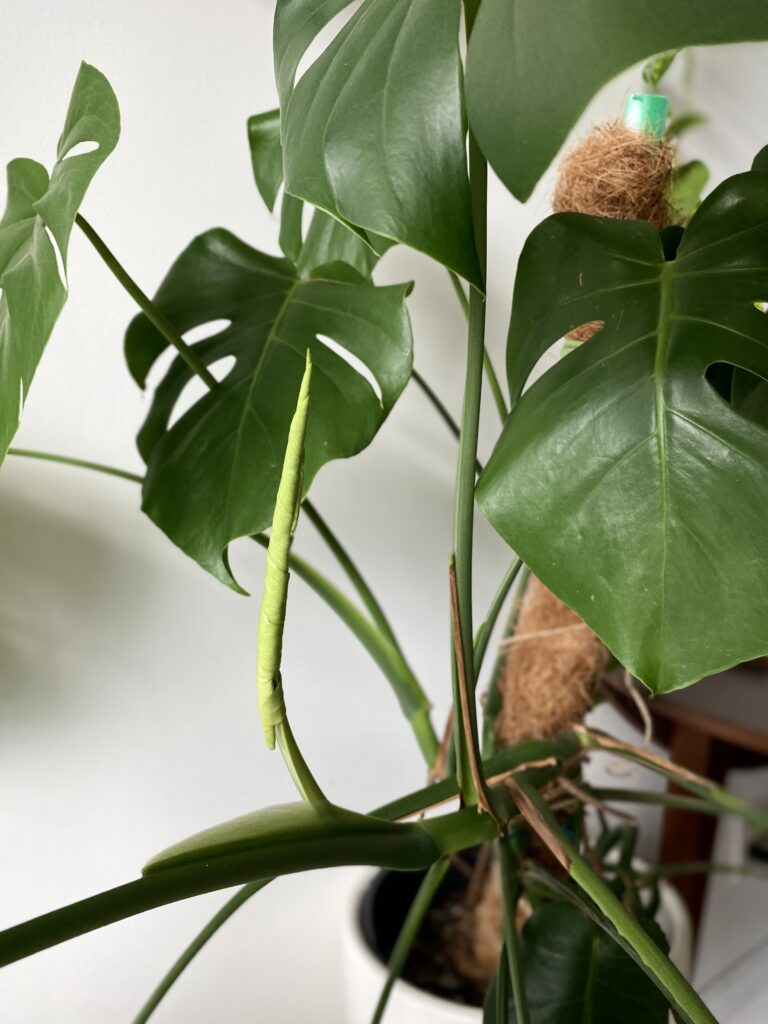
On average, Monstera Deliciosa can grow on average up to 15 feet indoors.
New foliage grows out of the stems of Monstera Deliciosa. The new leaf is bright green and grows up straight and appears wrapped. As it matures, the leaf opens and settles. The colour changes to a darker green that matches the rest of the plant.
🌸 Does the Monstera Deliciosa Bloom?
Monstera Deliciosa can flower. Typically its flowering period is in the summer, but can flower in the spring and fall as well.
✂️ How to Propagate Monstera Deliciosa?
The easiest way to start a new Monstera Deliciosa is by taking a stem cutting (or division).
- Cuttings: Choose a leaf from a healthy adult Monstera Deliciosa. Make sure the cutting has at least one node or this method won’t work. You can either water propagate or soil propagate from here.
- Water propagation (my preference): take the cutting from the healthy plant and place it in water. If the water starts to get murky, you will want to change out the water and put the plant back in. Otherwise it will potentially rot the stem and the plant won’t root. I like water propagation because I can see when the roots start to form in a clear glass container. When the roots are stable enough, I then plant it in soil.
- Soil propagation: with soil propagation, you can take the cutting and put it directly in soil. You won’t be able to see if the plant is rooting in the soil, but if the plant eventually dies, you know it didn’t root successfully. With soil propagation, you don’t have to worry about transplant shock.
- Division: Sometimes multiple monsteras will be potted together. In this situation, you can remove the entire plant from the pot, gently separate the plants, and plant the individual plant into a new pot with soil. Make sure you water the newly divided plant and place it in a bright location with indirect light.
Patience is key with propagation. Give your new plant time to settle into its environment. Once you see new growth, you know your plant is well established.
💧 How Much Water Does the Monstera Deliciosa Need?
The Monstera Deliciosa likes to be watered when mostly dry (likely once a week depending on your environment).
To determine if your plant needs water, you can stick your finger in the soil (1 to 2 inches) and if it is dry, its ready for water! If you don’t want to get your hands dirty, you can try a moisture meter.
I used to bottom water my monstera through the drainage holes of the pot on a base tray. This the easiest way to know if your plant is thirsty or not, and overwatering can lead to fungus gnats, root rot, or the death of your plant.
Since my monstera is too big to move, I top water it, but this is in a pot with drainage. This is critical because if your pot doesn’t have drainage, you might accidentally drown your plant or make some fungus gnats very happy.
Top watering can also help flush any mineral build up wash through the plant. Make sure the water drips out of the bottom of your drainage hole.
🪳 Pests & Problems 😔
Monstera Deliciosa can face the following pests and problems.
🪳 Pests
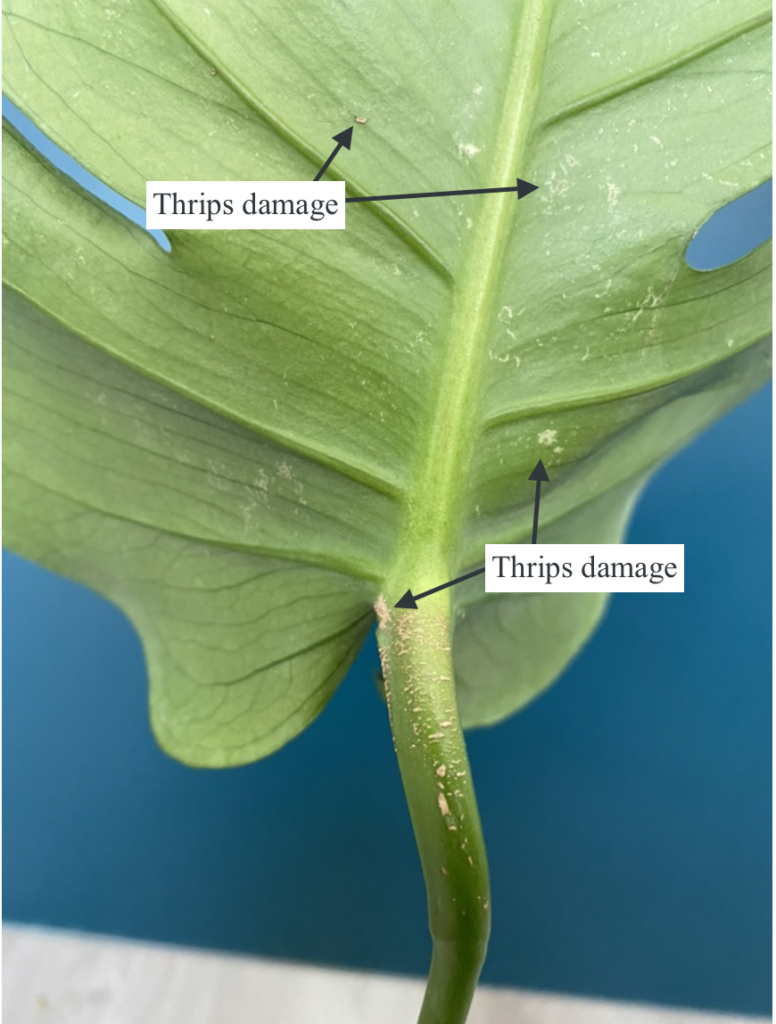
- Mealy Bugs: these look like little white cotton balls on the monstera. You can remove these with your fingers if you catch them early enough, but I would use a cotton swab with a drop of Isopropyl alcohol and try to scrape them off the stem.
- Spider Mites: If spider mites have taken to your monstera, spray them with a mixture of neem oil, dish soap and water (or you can buy an insecticidal soap). I repeat this about once or twice a week (depending on the severity of infestation) for about a month. It’s also good to do this preventatively once a month or so. You will know you have spider mites if you see webbing and leaf damage. Learn how to eradicate Spider Mites.
- Thrips: these are little, dark bugs that look like dirt. They suck the life out of the leaves, and lay eggs within the tissue of the leaf. As they age, they can grow wings and infect other plants. I spray the plant with a mixture of neem oil, dish soap and water. I repeat this every few days to try and get both the pest and the eggs. Sometimes I just chop the affected leaf since they are hard to eradicate. Complete guide on how to get rid of thrips.
- Fungus gnats: Spray the plant with a mixture of neem oil, dish soap and water. I also let the soil dry out and add dryer sheets on top of the soil so the gnats can’t sense the moisture on the soil.
😔 Other Common Problems
- Overwatering: Root rot happens from overwatering your plant with insufficient drainage. You can improve the drainage of your Monstera Deliciosa by ensuring your plant is potted in a planter with a drainage hole and using a well draining soil (something with a decent amount of perlite). You can also end up with fungus gnats or fungal disease from overwatering. Signs of overwatering also include curling, wilting leaves.
- Underwatering: Even though plants prefer to be underwatered over overwatered, you still have to remember to water your Monstera on a consistent schedule. Signs of underwatering an include leaves becoming shrivelled, discoloured, dry, brown leaf tips, yellowing, or light brown spots.
- Drooping Leaves: Your Monstera is likely thirsty. Just give it a little water and it should be as good as new. If the soil is already wet though, its possible your monstera has been overwatered.
- Yellowing Leaves: If you have a new leaf coming in, your plant is likely fine. Plants pull energy from older leaves to support new growth. But it can also indicate over- or under- watering or lighting issues.
- Brown Leaf Tips: This can be a sign of underwatering or inconsistent watering.
- Yellow Hallow Around Brown Spots or Black Spots on Leaves: This is a sign of fungus. Remove the affected leaves and let the soil dry out before watering again. This is often caused from overwatering.
☢️ Are Monstera Deliciosa Toxic?
Monstera Deliciosa is moderately toxic to humans and pets if ingested.
Monstera Deliciosa Quick Care Guide
| Scientific Name | Monstera deliciosa |
| Nickname | Swiss Cheese Plant, Monstera, Split-leaf Philodendron |
| Origins | Central America |
| Light | Medium – Bright, indirect light |
| Temperature | 18-30 degrees celsius |
| Humidity | 60% preferred, but fine with average household humidity (40-60%) |
| Height | Up to 15 ft |
| Blooms | Yes |
| Propagate | Stem Cuttings, Divison, Water Propagation |
| Water Frequency | When mostly dry (likely once a week) |
| Pests | Fungus gnats, Thrips, Spider Mites, Mealy Bugs |
| Common Problems | Overwatering (root rot), underwatering, fungal disease, brown leaf tips, black spots, wilting leaves, yellowing leaves, light brown spots ting leaves, black spots |
| Toxicity | Moderately toxic |
References
Below is a list of external sources I consulted while writing this post. This post is a mixture of my own experiences, and the external sources listed below:
Jomo Studio – Monstera Deliciosa (this is where I bought my plant)
Britannica – Monstera
The Spruce – Monstera Deliciosa

